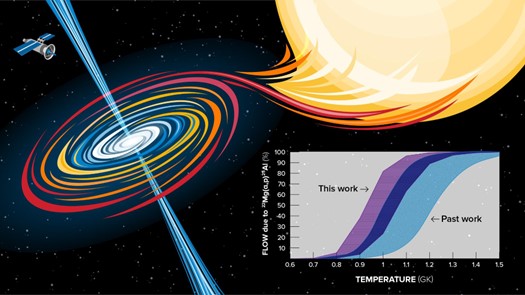
Scientists Directly Measure a Key Reaction in Neutron Star Binaries
Scientists study a key reaction in X-ray bursts, shedding light on the reaction mechanisms behind thermonuclear flare-ups during these events.

Scientists study a key reaction in X-ray bursts, shedding light on the reaction mechanisms behind thermonuclear flare-ups during these events.
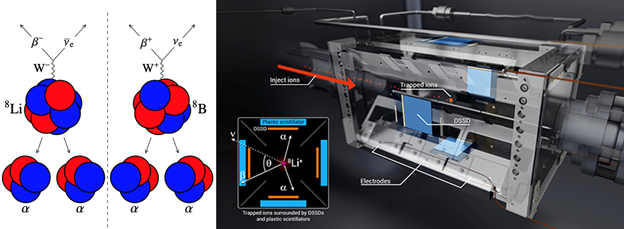
Scientists develop a new method to characterize the properties of one of the four fundamental forces of nature.
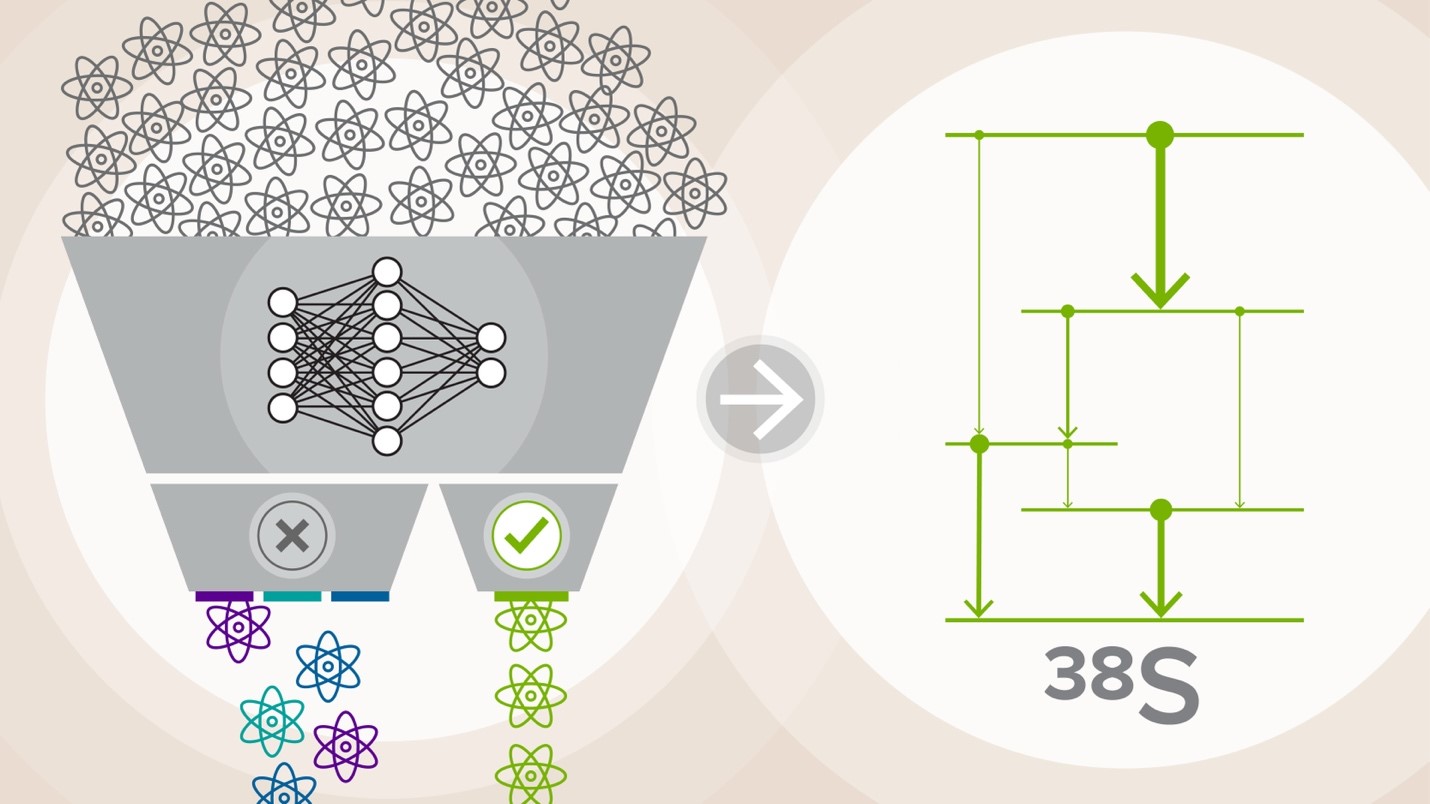
Forefront nuclear physics capabilities and machine-learning data analyses combine to generate new information on quantum energy levels in sulfur-38.
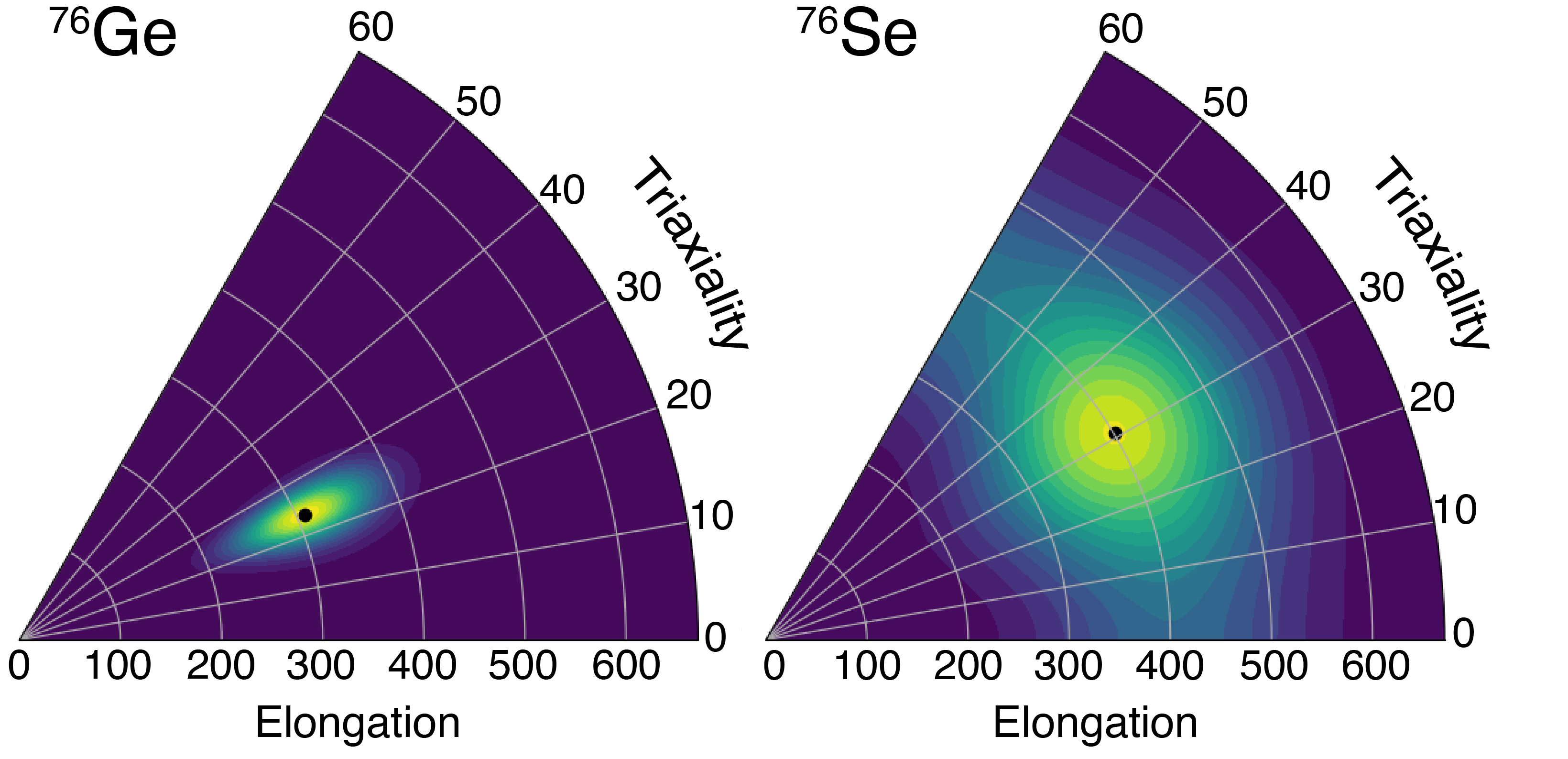
Scientists investigate neutrinoless double beta decay through neutrino mass and the nuclear structure of germanium-76.
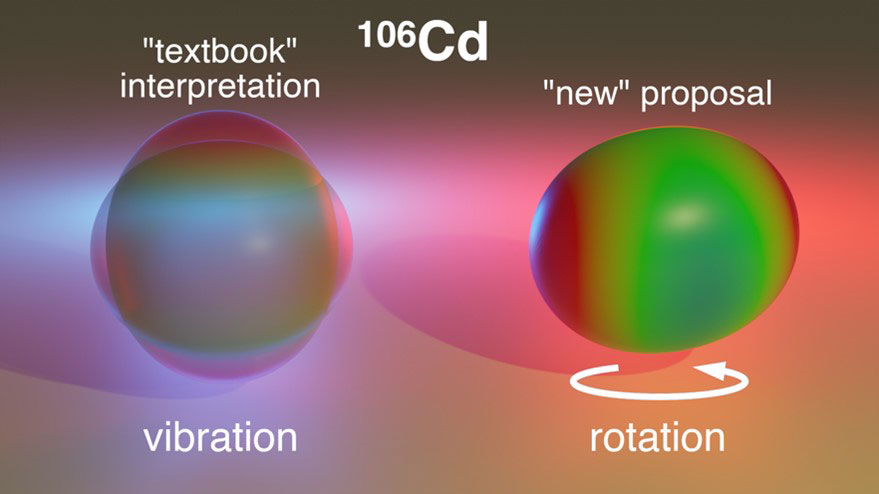
In conflict with a long-held explanation of cadmium isotope motion, a new experiment found that cadmium-106 may rotate instead of vibrate.

The types of ancient stellar explosions that gave rise to meteoric presolar grains can now be identified thanks to observations of gamma rays emitted by the argon-34 isotope
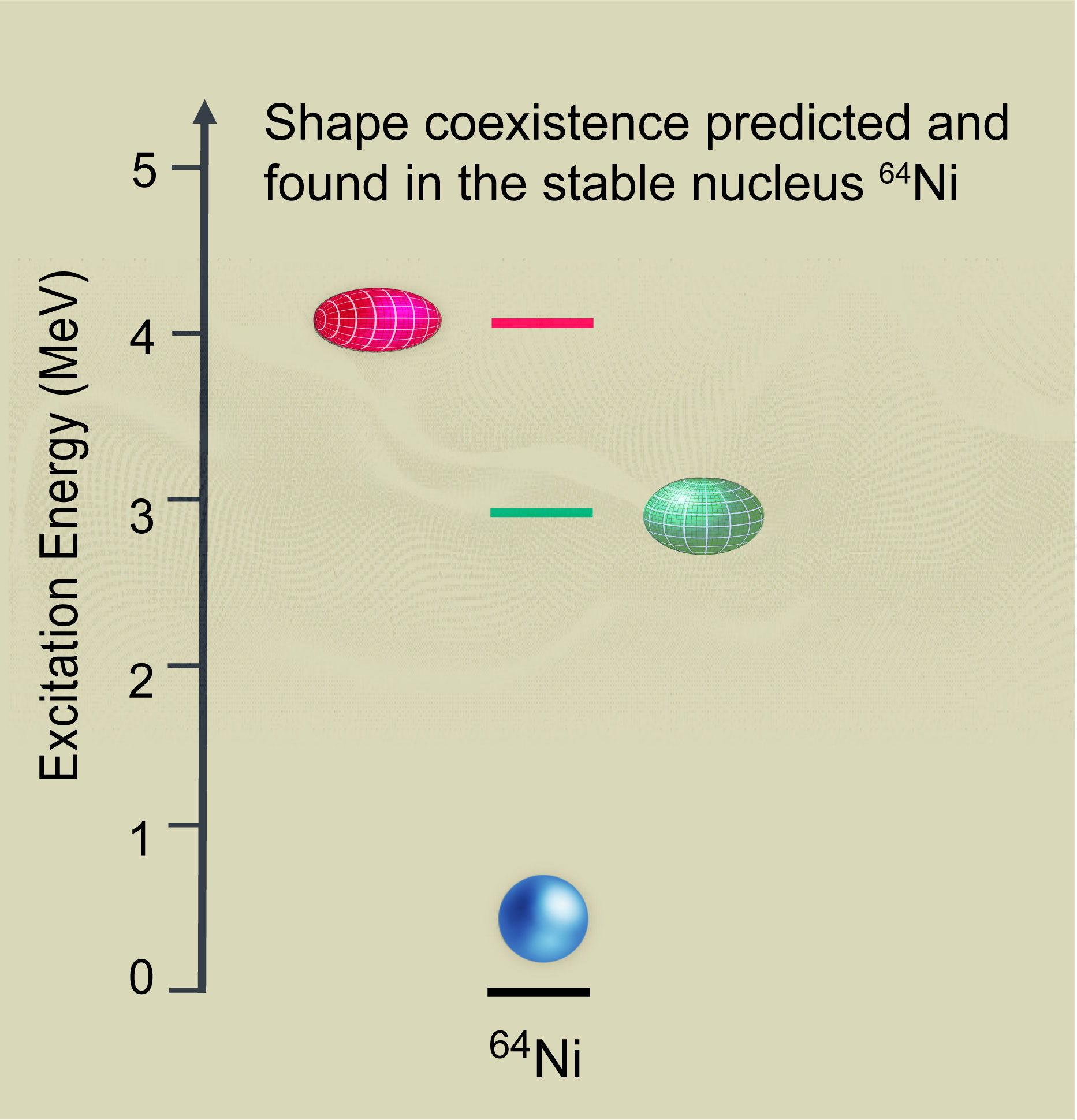
Scientists track down coexistence of multiple shapes in the Nickel-64 nucleus: a spherical ground state and elongated and flattened shapes.
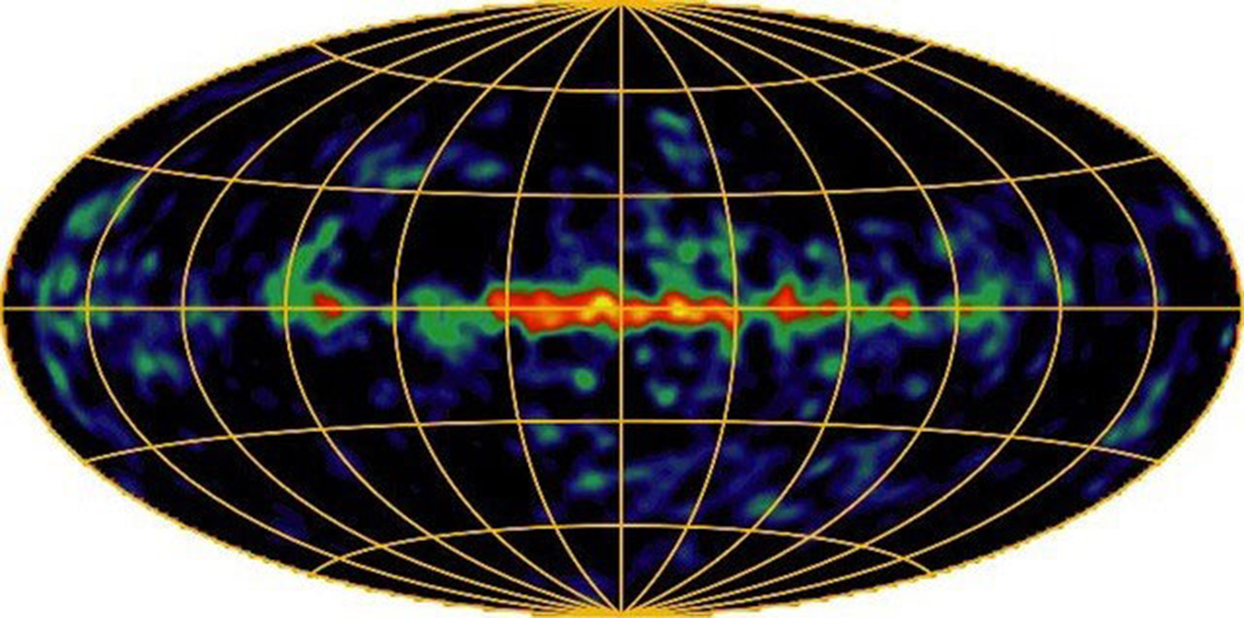
A new measurement using a beam of aluminum-26 prepared in a metastable state allows researchers to better understand the creation of the elements in our galaxy.
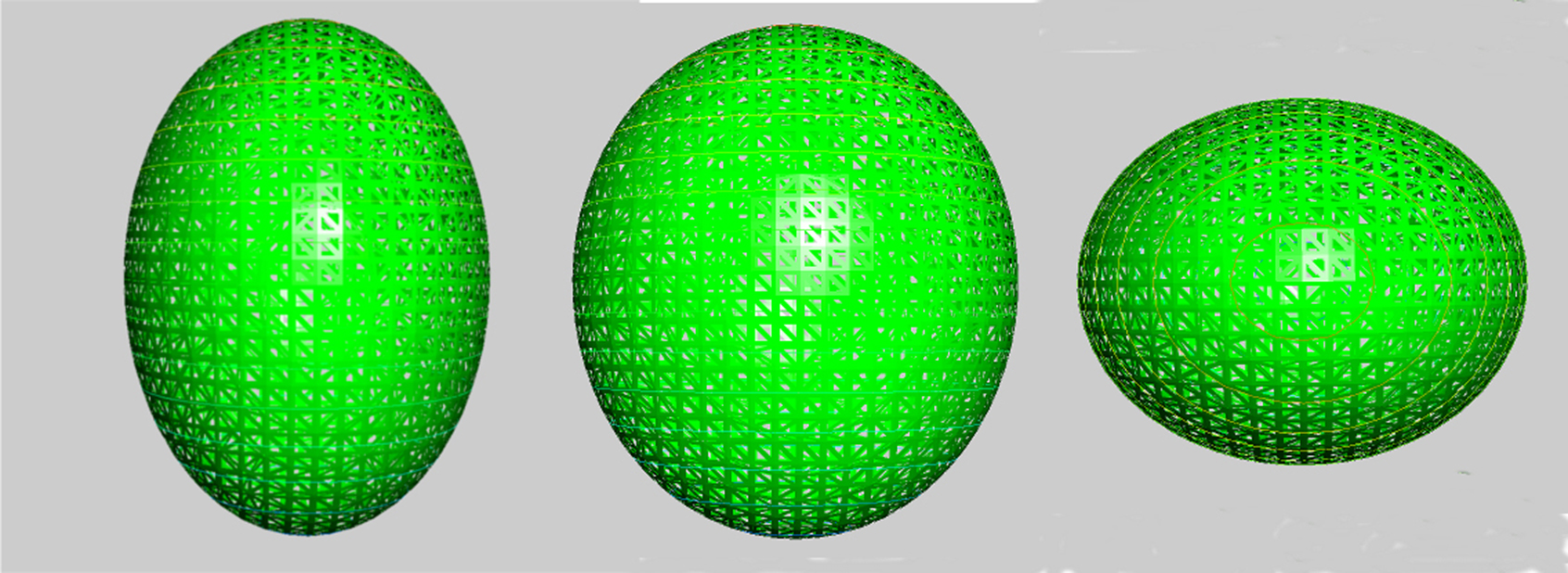
A new shape measurement of unstable 110Ru has found this nucleus to be similar to a squashed football.
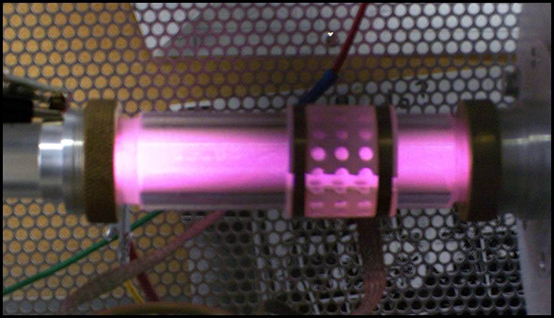
A new method detects residual contaminants in ultra-pure helium gas, critical to nuclear physics experiments.
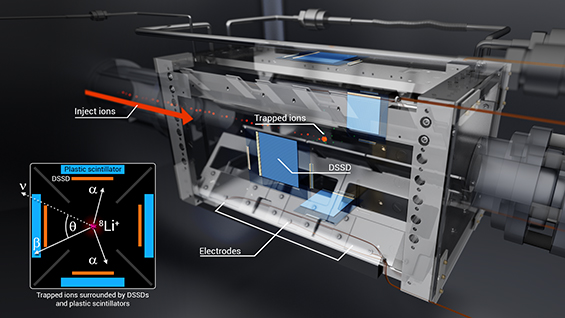
Studies of the neutrinos emitted in the radioactive decay of nuclei held in an ion trap allow sensitive searches for new interactions.
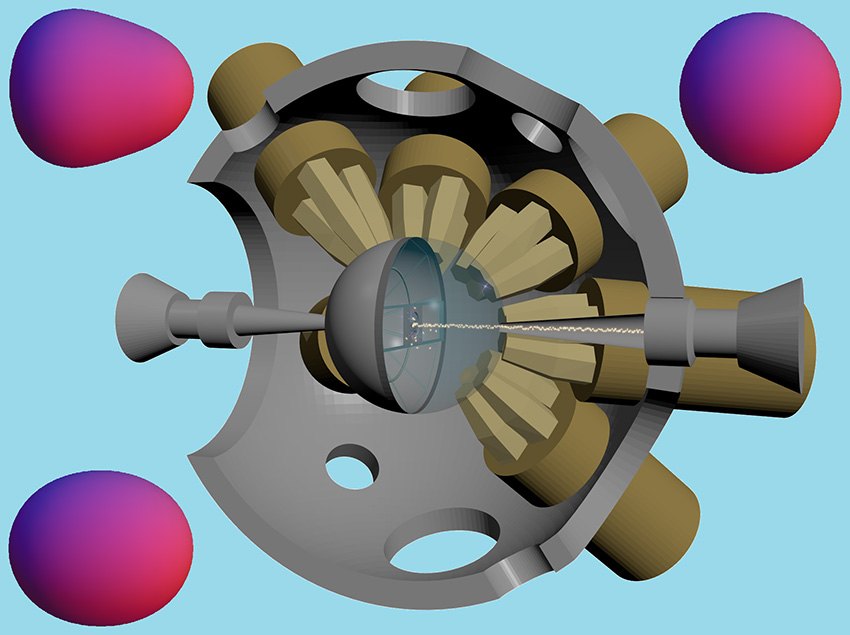
Cutting-edge experiment with a beam of radioactive barium ions provides direct evidence of nuclear pear-shape deformation.